Citroen C3 Aircross vs Dacia Spring – Which car suits you better?
Everyday use, family trips or long-distance drives – here’s where the differences show.
Discover whether Citroen C3 Aircross or Dacia Spring fits your lifestyle better.
Costs and Efficiency:
When it comes to price and running costs, the biggest differences usually appear. This is often where you see which car fits your budget better in the long run.
Dacia Spring has a a bit advantage in terms of price – it starts at 14500 £, while the Citroen C3 Aircross costs 16200 £. That’s a price difference of around 1706 £.
In terms of energy consumption, the advantage goes to the Dacia Spring: with 13.20 kWh per 100 km, it’s evident more efficient than the Citroen C3 Aircross with 16.30 kWh. That’s a difference of about 3.10 kWh.
As for range, the Citroen C3 Aircross performs significantly better – achieving up to 400 km, about 172 km more than the Dacia Spring.
Engine and Performance:
Power, torque and acceleration say a lot about how a car feels on the road. This is where you see which model delivers more driving dynamics.
When it comes to engine power, the Citroen C3 Aircross has a decisively edge – offering 145 HP compared to 65 HP. That’s roughly 80 HP more horsepower.
In acceleration from 0 to 100 km/h, the Citroen C3 Aircross is a bit quicker – completing the sprint in 12.30 s, while the Dacia Spring takes 13.70 s. That’s about 1.40 s faster.
In terms of top speed, the Citroen C3 Aircross performs noticeable better – reaching 201 km/h, while the Dacia Spring tops out at 125 km/h. The difference is around 76 km/h.
There’s also a difference in torque: Citroen C3 Aircross pulls convincingly stronger with 230 Nm compared to 125 Nm. That’s about 105 Nm difference.
Space and Everyday Use:
Beyond pure performance, interior space and usability matter most in daily life. This is where you see which car is more practical and versatile.
Seats: Citroen C3 Aircross offers to a small extent more seating capacity – 5 vs 4.
In curb weight, Dacia Spring is clearly perceptible lighter – 1013 kg compared to 1312 kg. The difference is around 299 kg.
In terms of boot space, the Citroen C3 Aircross offers clearly perceptible more room – 460 L compared to 308 L. That’s a difference of about 152 L.
In maximum load capacity, the Citroen C3 Aircross performs noticeable better – up to 1600 L, which is about 596 L more than the Dacia Spring.
When it comes to payload, Citroen C3 Aircross clearly perceptible takes the win – 462 kg compared to 302 kg. That’s a difference of about 160 kg.
Who comes out on top?
Overall, the Citroen C3 Aircross shows itself to be dominates this comparison and secures the title of DriveDuel Champion.
It convinces with the more balanced overall package and proves to be the more versatile choice for everyday use.
 @ Citroën / Stellantis Media
@ Citroën / Stellantis Media
Citroen C3 Aircross
Citroen C3 Aircross
The Citroën C3 Aircross is a cheeky compact SUV that trades bland conformity for playful French character and clever practicality, ideal if you want a car with personality. It soaks up city life with a comfortable ride, inventive cabin tricks and a look that turns heads without asking for attention.
details @ Citroën / Stellantis Media
@ Citroën / Stellantis Media
 @ Citroën / Stellantis Media
@ Citroën / Stellantis Media
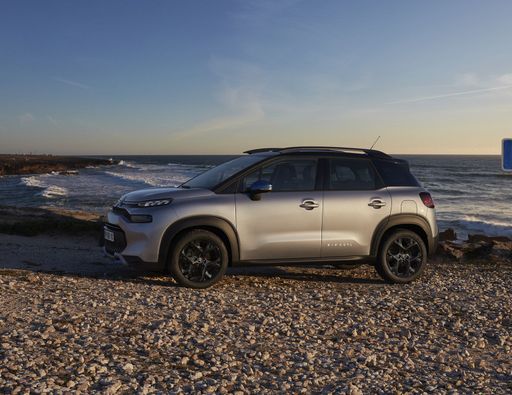 @ Citroën / Stellantis Media
@ Citroën / Stellantis Media
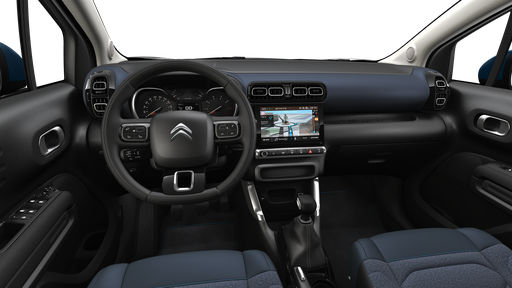 @ Citroën / Stellantis Media
@ Citroën / Stellantis Media
Dacia Spring
The Dacia Spring stands out as an affordable and environmentally friendly option in the electric vehicle market, combining practicality with a compact design ideal for urban settings. Its minimalist interior, while basic, provides all the essential features needed for a comfortable drive, reflecting its cost-effective approach. The vehicle's performance suits city driving, making it an appealing choice for those seeking an entry-level electric car.
details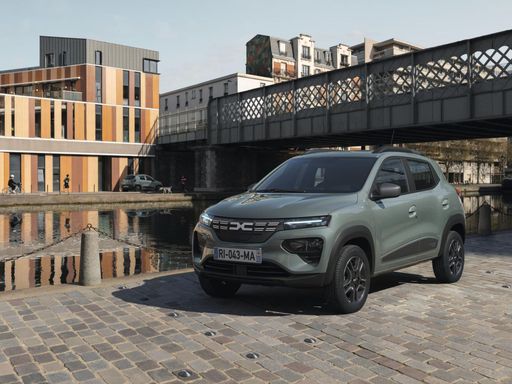 @ Dacia / Renault Group Media
@ Dacia / Renault Group Media
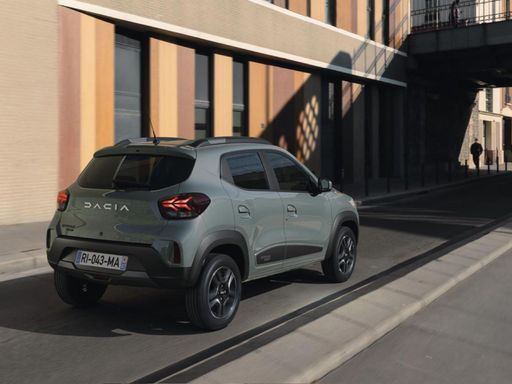 @ Dacia / Renault Group Media
@ Dacia / Renault Group Media
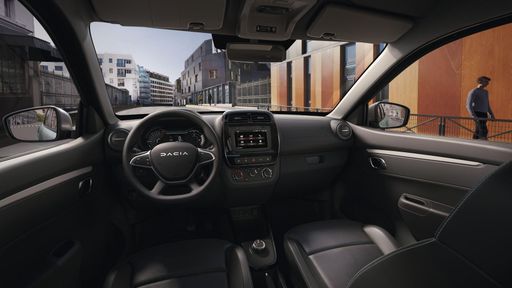 @ Dacia / Renault Group Media
@ Dacia / Renault Group Media
 @ Citroën / Stellantis Media
@ Citroën / Stellantis Media
|
 @ Dacia / Renault Group Media
@ Dacia / Renault Group Media
|
|
|
|
Costs and Consumption |
|
|---|---|
|
Price
16200 - 28200 £
|
Price
14500 - 17100 £
|
|
Consumption L/100km
5.3 - 5.9 L
|
Consumption L/100km
-
|
|
Consumption kWh/100km
16.3 - 18.3 kWh
|
Consumption kWh/100km
13.2 - 14.1 kWh
|
|
Electric Range
303 - 400 km
|
Electric Range
225 - 228 km
|
|
Battery Capacity
-
|
Battery Capacity
26.80 kWh
|
|
co2
0 - 134 g/km
|
co2
0 g/km
|
|
Fuel tank capacity
44 L
|
Fuel tank capacity
-
|
Dimensions and Body |
|
|---|---|
|
Body Type
SUV
|
Body Type
SUV
|
|
Seats
5
|
Seats
4
|
|
Doors
5
|
Doors
5
|
|
Curb weight
1312 - 1608 kg
|
Curb weight
1013 - 1050 kg
|
|
Trunk capacity
460 L
|
Trunk capacity
308 L
|
|
Length
4395 mm
|
Length
3701 mm
|
|
Width
1795 mm
|
Width
1583 mm
|
|
Height
1640 - 1660 mm
|
Height
1519 mm
|
|
Max trunk capacity
1600 L
|
Max trunk capacity
1004 L
|
|
Payload
407 - 462 kg
|
Payload
265 - 302 kg
|
Engine and Performance |
|
|---|---|
|
Engine Type
Petrol, Electric, Petrol MHEV
|
Engine Type
Electric
|
|
Transmission
Manuel, Automatic
|
Transmission
Automatic
|
|
Transmission Detail
Manual Gearbox, Reduction Gearbox, Dual-Clutch Automatic
|
Transmission Detail
Reduction Gearbox
|
|
Drive Type
Front-Wheel Drive
|
Drive Type
Front-Wheel Drive
|
|
Power HP
101 - 145 HP
|
Power HP
44 - 65 HP
|
|
Acceleration 0-100km/h
12.3 - 13 s
|
Acceleration 0-100km/h
13.7 - 19.1 s
|
|
Max Speed
143 - 201 km/h
|
Max Speed
125 km/h
|
|
Torque
125 - 230 Nm
|
Torque
113 - 125 Nm
|
|
Number of Cylinders
3
|
Number of Cylinders
-
|
|
Power kW
74 - 107 kW
|
Power kW
33 - 48 kW
|
|
Engine capacity
1199 cm3
|
Engine capacity
-
|
General |
|
|---|---|
|
Model Year
2024 - 2025
|
Model Year
2024
|
|
CO2 Efficiency Class
D, A
|
CO2 Efficiency Class
A
|
|
Brand
Citroen
|
Brand
Dacia
|
What drivetrain options does the Citroen C3 Aircross have?
The Citroen C3 Aircross is offered with Front-Wheel Drive.
The prices and data displayed are estimates based on German list prices and may vary by country. This information is not legally binding.
